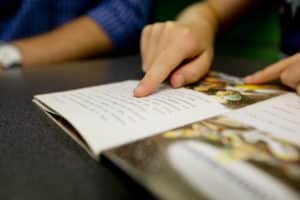Although reading fluency is dependent on efficient and accurate word reading, it does not always automatically proceed from it. As with any learned skill, fluency is achieved largely through focused and intentional practice. Just like learning to play a musical instrument or becoming skilled at a sport, proficiency and expertise in reading develop through repetition, drills, and coaching.
Effective fluency instruction should consider all three aspects of fluency: accuracy, rate, and prosody.
"At the current state of knowledge, it is adequate to conclude that the systematic instruction of letter- sound-correspondences and decoding strategies, and the application of these skills in reading and writing activities, is the most effective method for improving literacy skills of children and adolescents with reading disabilities."
Galuschka, Ise, Krick, & Schulte-Korne (2014).

Accuracy
Any student who struggles to read words accurately will inevitably have poor fluency. Accuracy in word reading comes from being able to decode words correctly and store an accurate representation of them in memory for instant recall. Accuracy in decoding is the result of secure knowledge of letter-sound associations.
Letter-sound associations are sometimes described as the ‘glue’ that connects memory of the written word and the spoken word. Without this glue, automaticity in word reading through the development of sight words proceeds slowly.
The most effective way to teach students to use letter-sound associations to decode words is through systematic and explicit phonics instruction – ideally synthetic phonics. This is the case for typically developing children and for children and adolescents with reading difficulties and disabilities.
To determine whether a student’s poor fluency is due to difficulties with decoding, a phonics assessment should be used. If accurate decoding is presenting problems, a synthetic phonics intervention will be required until decoding becomes accurate and efficient.
Rate and prosody
"The keys to the development of reading fluency include modelling fluent reading for students and providing students with repeated reading practice of written passages, while at the same time providing assistance and coaching in the repeated reading."
Rasinski, Homan and Biggs (2009)
Fluency teaching activities with good evidence of effectiveness
These activities are described in detail elsewhere in this section.
- Repeated reading
- Choral reading
- Echo reading
- Paired/partner reading
- Readers theatre
- Audio-assisted reading
- Varied practice
